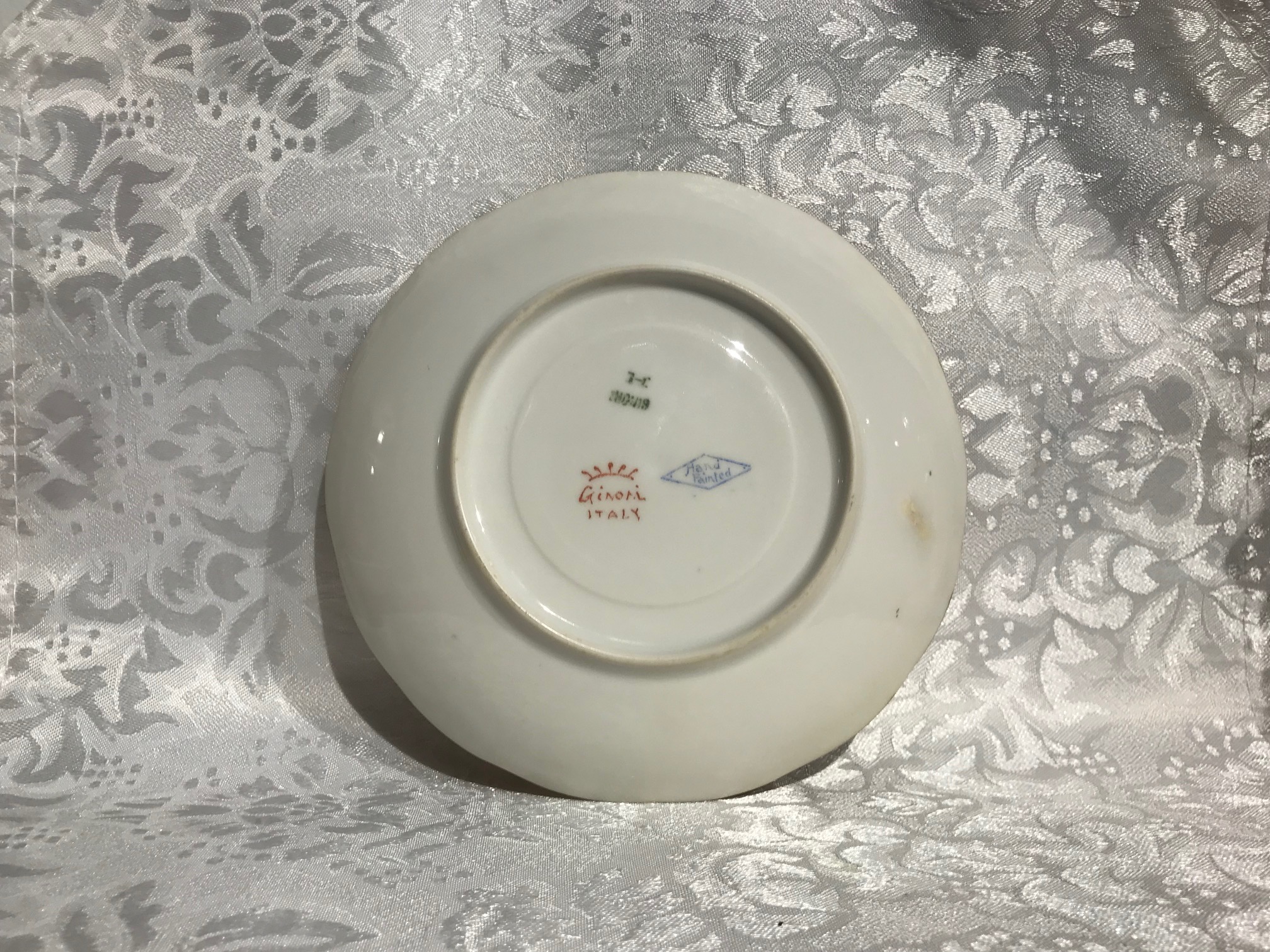Hand painted Italian saucer with gold accents: 10,600 ppm Lead on the food surface. 90 ppm is unsafe for kids.
When tested with an XRF instrument the hand painted Italian saucer pictured here (with real gold accents!) had the following readings:
Gold center of dish:
- Barium (Ba):1,381 +/- 190 ppm
- Gold (Au): 8,731 +/- 157 ppm
- Iron (Fe): 1,173 +/- 67 ppm
- Bismuth (Bi): 1,318 +/- 50 ppm
Floral / Leaf + Pink edge:
- Lead (Pb): 10,600 +/- 300 ppm
- Chromium (Cr): 1,078 +/- 94 ppm
- Antimony (Sb): 123 +/- 22 ppm
- Tin (Sn): 38 +/- 18 ppm
- Zinc (Zn): 1,612 +/- 92 ppm
- Copper (Cu): 109 +/- 42 ppm
- Nickel (Ni): 204 +/- 73 ppm
- Iron (Fe): 3,365 +/- 274 ppm
- Vanadium (V): 69 +/- 24 ppm
- Titanium (Ti): 196 +/- 39 ppm
- Cobalt (Co): 385 +/- 109 ppm
Test results reported on this blog are science based, accurate and replicable. Unless otherwise noted, each test result reported here was for testing done for a minimum of 60 seconds with a freshly calibrated XRF instrument (repeated multiple times to confirm the levels of metals found.) Metals not detected by the XRF instrument in “Consumer Goods Mode” are not listed in the test results set above. Said another way – all metals detected by the XRF instrument (testing in Consumer Goods mode) are listed above – for each surface tested.
How is Lead allowed in dishes?
Why is this legal?
While dishes are not currently regulated for total Lead content as detectable with an XRF instrument, a comparable and relevant standard to consider in evaluating Lead-safety in dishes is the United States Consumer Product Safety Commission standards for toys and other items used by children (standards implemented with the Consumer Product Safety Improvement Act of 2008.) As a result of this relatively new set of regulatory standards, items are considered safe for use by children as long as they fall below 90 ppm Lead in the paint, glaze or coating (and below 100 ppm Lead in the substrate.) Dishware is exempt form this regulatory standard unless it is a set of dishes expressly made and marketed to be used by children (like a set of baby dishes.) The government / industry “thinking” here (read: “exploited regulatory loophole”) is that “dishes are not intended for use by children.”
Total Lead content standards (as detectable using XRF technology) are separate and distinct from leach testing standards. Leach testing standards are the only current standards for dishware made to be used by adults. Current/modern Leach testing standards are outdated and not protective of human health. You can read more about the limitations of leach testing standards (and why they put human health at risk when dishes are used as intended) here on this related post.The age of this particular dish is unknown and it is possible that it was also made before ANY regulatory standards were in place at all.
So how does this dish rate, overall?
Would you use it in your home Tamara?
I would never use a dish like this given the very high level of Lead in the food surface of the dish. I personally prefer to err on the side of caution and use completely Lead-free dishes in my home. Here’s my Amazon affiliate link* to the exact dishes I use every day in my home (a style and brand of dishes I have tested repeatedly over the years and found to be Lead-free – in the plain white options only): https://amzn.to/2NwxTJ1 [If you are interested in purchasing the dishes I use in my home, check the prices at Target before purchasing them on Amazon – as Target may have a better price.] Here’s a link to a post with some simpler (not as decorated and therefore less expensive) versions of the dishes I use in my home as well.
As always, thank you for reading and sharing my posts.
Please let me know if you have any questions.
The testing I report on here on my blog is a collaborative effort with the support of my readers. If you are interested in participating in this testing, please click here for more information about how that works.
Tamara Rubin
#LeadSafeMama
*Amazon links are affiliate links. If you purchase something after clicking on one of my links I may receive a small percentage of what you spend (usually 4 to 6%) at no extra cost to you. 

Never Miss an Important Article Again!
Join our Email List






